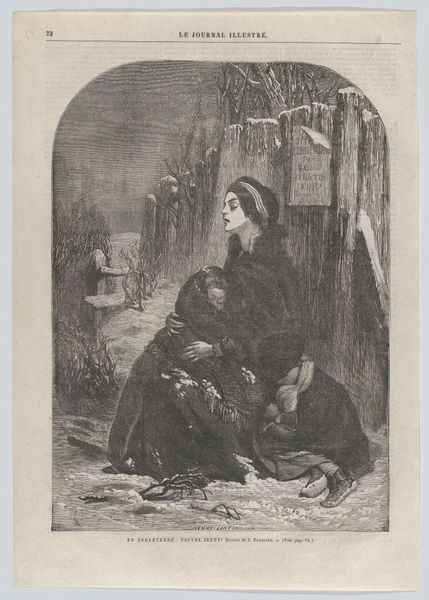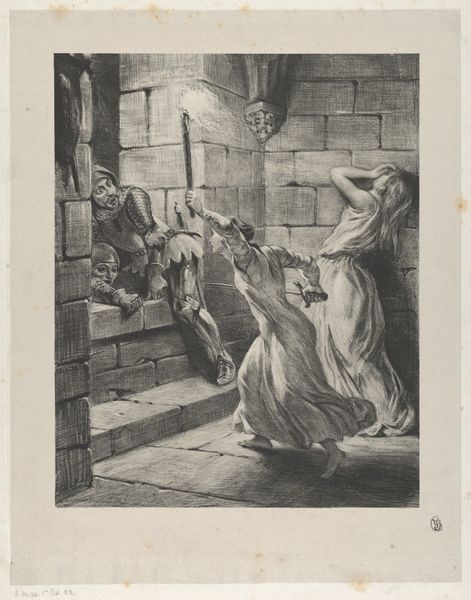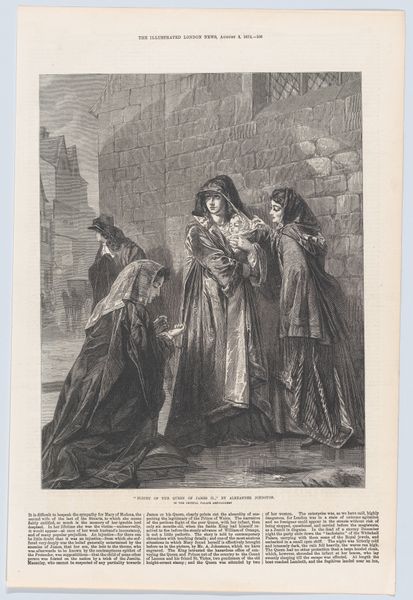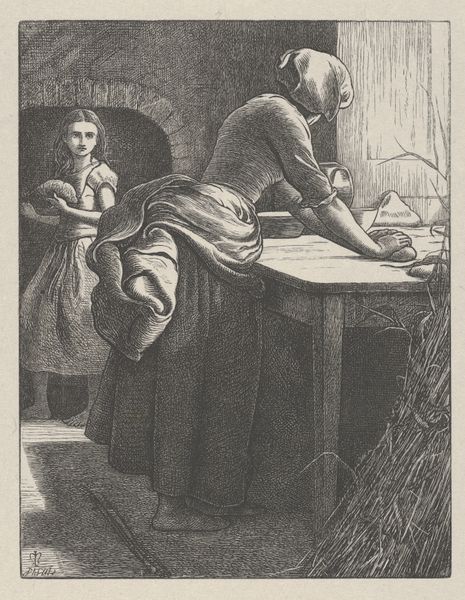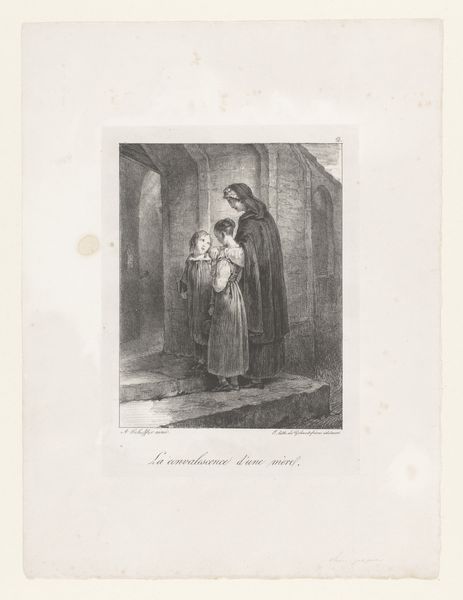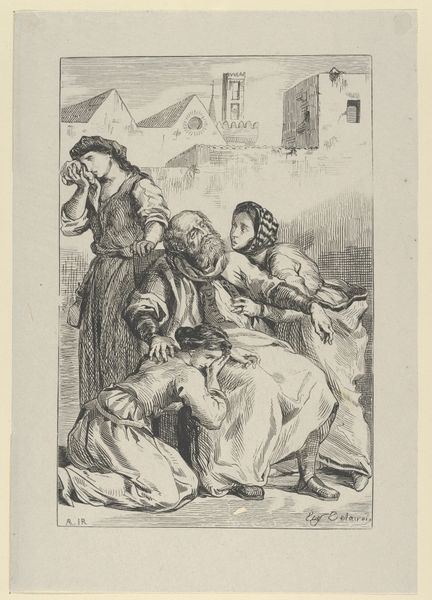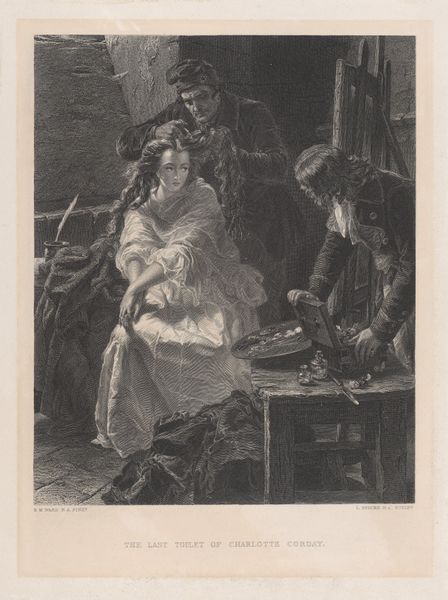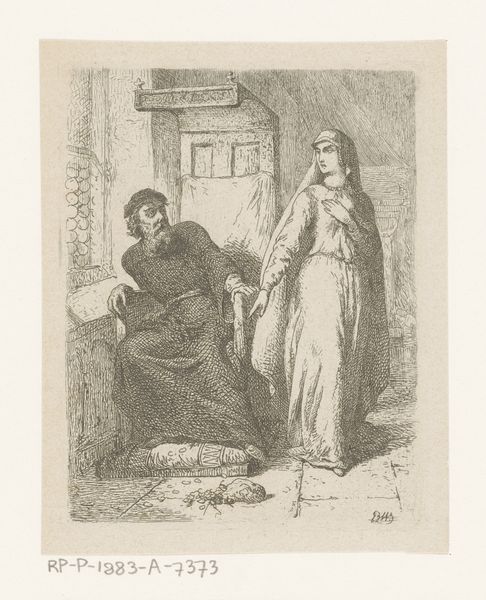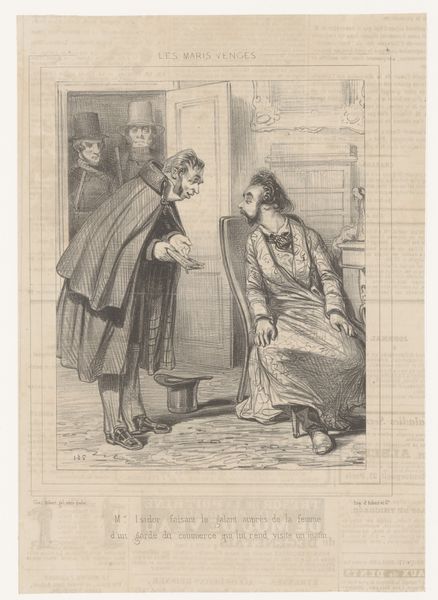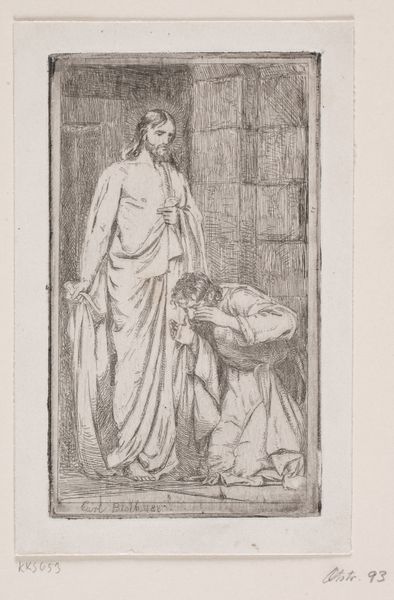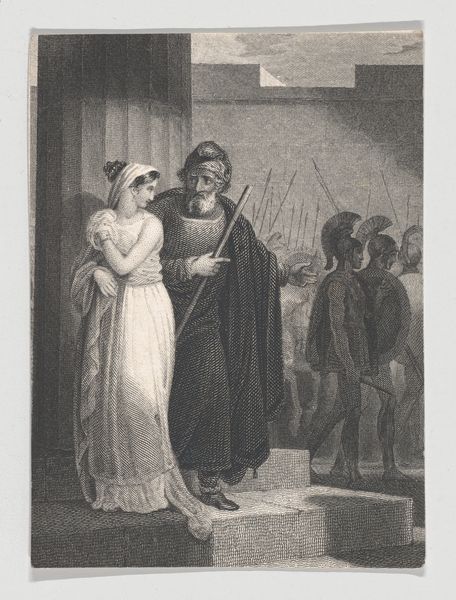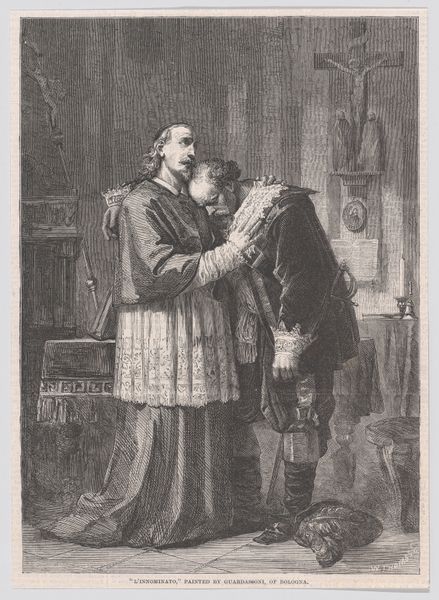
Tired Nature's Sweet Restorer, Balmy Sleep, from "Illustrated London News" 1863
0:00
0:00
drawing, print, engraving
#
portrait
#
drawing
#
girl
#
ink paper printed
# print
#
old engraving style
#
genre-painting
#
engraving
Dimensions: Sheet: 15 13/16 × 10 7/8 in. (40.2 × 27.7 cm)
Copyright: Public Domain
Curator: What a quietly devastating image. There’s something so still and heavy in it. Editor: That's an astute observation. We are looking at "Tired Nature's Sweet Restorer, Balmy Sleep," an engraving made in 1863 by William Luson Thomas for the "Illustrated London News," currently held at the Metropolitan Museum of Art. It speaks volumes, doesn’t it, about Victorian motherhood. Curator: Volumes, yes! It’s almost crushing. I see this weary mother halfway up the stairs, holding what must be a sleeping baby – swaddled so tightly. The older child is down on the stairs, staring up… is it longing? Is it accusation? I keep looking at her face, which seems… blank. Editor: It's a window into a particular socio-economic reality for many women at that time. Her exhaustion isn't merely personal; it reflects broader social pressures around domesticity and childcare. This engraving was part of a larger publication aimed at a specific audience. Thomas intended to say something specific with it. Curator: The title, “Tired Nature’s Sweet Restorer, Balmy Sleep,” it's laced with irony. Sleep as a restorer… for whom? Certainly not this woman. The title promises balm, but the image screams burden. Is there even the possibility for true rest here? I mean, it’s beautiful, formally; that engraving is so fine and delicate, but emotionally? Whew. Editor: Absolutely, it highlights the contradictions inherent in the idealized Victorian image of motherhood versus its lived reality. The girl at the bottom, perhaps keenly feels the emotional and practical cost to the mother? This publication would have brought debates and commentary that are valuable historical information in the present, like these feelings, of isolation and pressure, for modern conversations around maternal mental health and social support. Curator: That is why art is important. The best of it can echo with all the contradictions and messes of life that we sometimes pretend aren’t there. It’s more than pretty pictures; it is felt life. Editor: Precisely. It's about excavating those buried narratives and fostering dialogue. It invites reflection on historical power dynamics, gender roles, and how they continue to shape our present realities. Art like this really bridges history and the present moment.
Comments
No comments
Be the first to comment and join the conversation on the ultimate creative platform.
